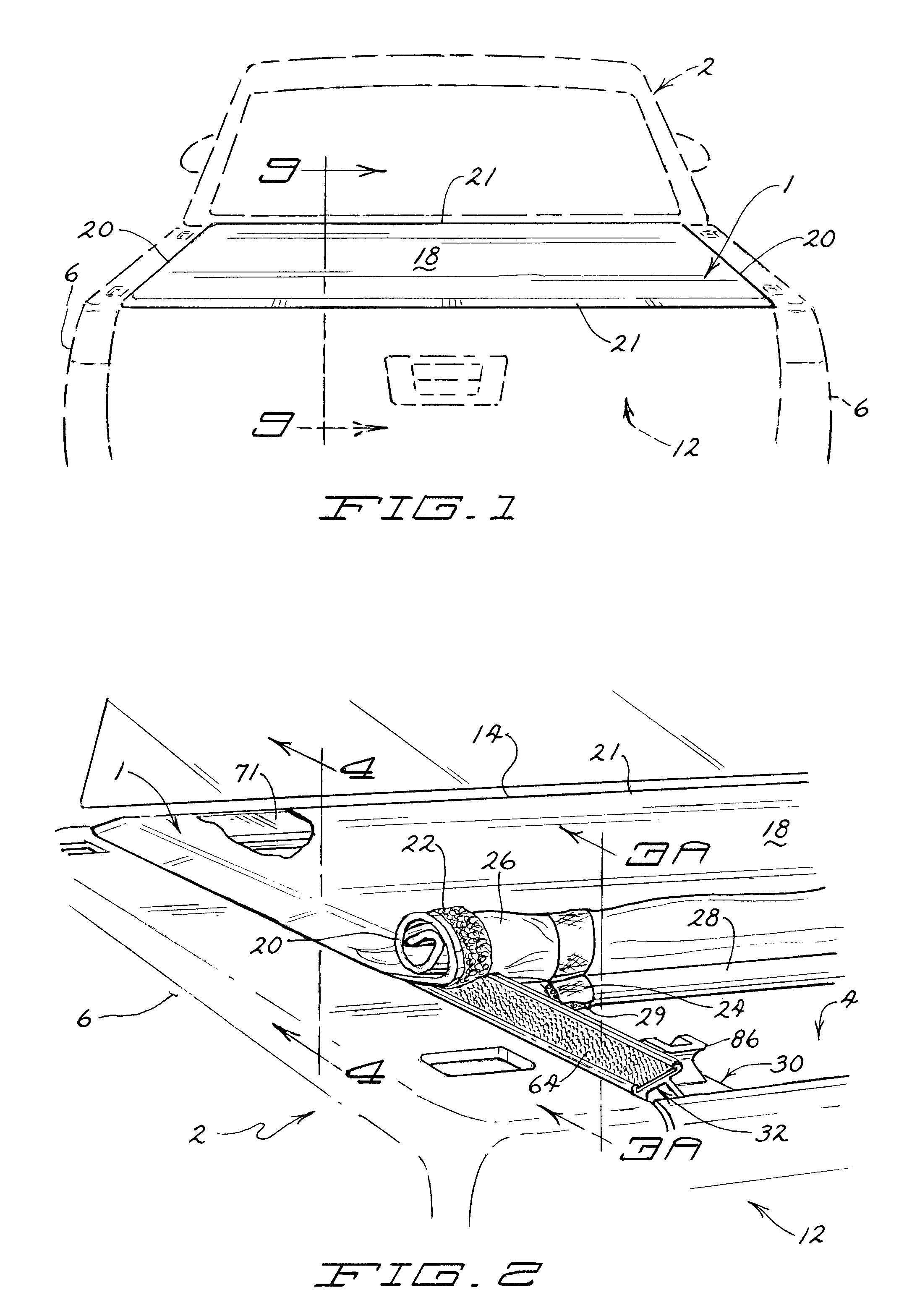Tonneau cover assemblies
a technology of tonneau covers and assemblies, which is applied in the direction of haberdashery, superstructure subunits, roofs, etc., can solve the problems of reducing affecting the performance affecting the inclination of the inclination portion, so as to reduce the thickness of the inclined portion. , the effect of saving materials and reducing the cost of materials
- Summary
- Abstract
- Description
- Claims
- Application Information
AI Technical Summary
Benefits of technology
Problems solved by technology
Method used
Image
Examples
Embodiment Construction
can be better understood with reference to the accompanying drawings, wherein
[0019]FIG. 1 is an end view of a tonneau cover apparatus of the present invention installed over a cargo box of a pickup truck (shown partially, in phantom);
[0020]FIG. 2 is a partial, perspective view of the tonneau cover apparatus of FIG. 1, wherein the tonneau cover apparatus includes a flexible cover that has been partially rolled-up to expose a portion of a side rail;
[0021]FIG. 3A is a cross-sectional view of the side rail of the tonneau cover apparatus of FIG. 2 as viewed along line 3A-3A of FIG. 2; the side rail is attached to a sidewall of the cargo box (the flexible cover and other elements shown in FIG. 2 have been omitted for clarity);
[0022]FIG. 3B is a partial, cross sectional view of an alternate embodiment of a side rail, similar to that of FIG. 3B, but illustrating an alternate ridge configuration in which the side rail does not have a ridge and the ridge is part of a first fastener component ...
PUM
 Login to View More
Login to View More Abstract
Description
Claims
Application Information
 Login to View More
Login to View More - R&D
- Intellectual Property
- Life Sciences
- Materials
- Tech Scout
- Unparalleled Data Quality
- Higher Quality Content
- 60% Fewer Hallucinations
Browse by: Latest US Patents, China's latest patents, Technical Efficacy Thesaurus, Application Domain, Technology Topic, Popular Technical Reports.
© 2025 PatSnap. All rights reserved.Legal|Privacy policy|Modern Slavery Act Transparency Statement|Sitemap|About US| Contact US: help@patsnap.com



